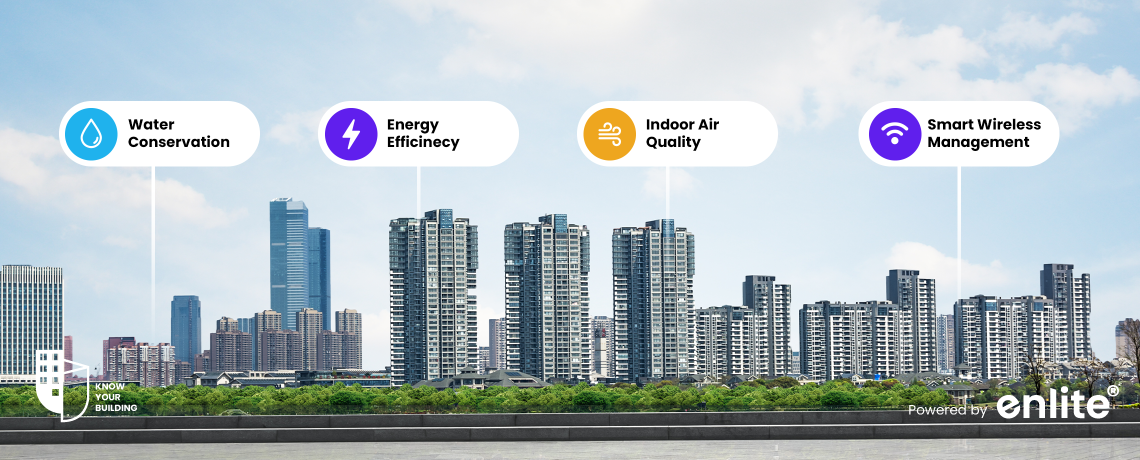Introduction
When it comes to our indoor spaces, the quality of the air we breathe is of utmost importance. Indoor air quality refers to the state of the air within buildings and structures, encompassing a range of factors that affect its cleanliness and freshness. From pollutants and temperature to humidity levels and ventilation, understanding indoor air quality is vital for creating a healthy and comfortable environment.
Understanding Indoor Air Quality
Understanding indoor air quality is essential for creating a healthy and comfortable indoor environment. It encompasses several factors that contribute to the overall condition of the air within buildings and structures.
One crucial aspect of indoor air quality is the presence of pollutants. These can originate from various sources, including building materials, such as paints and carpets, as well as cleaning products, furniture, and appliances. Outdoor contaminants, such as vehicle emissions and pollen, can also infiltrate indoor spaces and impact air quality.
Temperature and humidity levels are additional factors that influence indoor air quality. Proper temperature control ensures comfort while maintaining optimal humidity levels helps prevent issues like mold and mildew growth, which can negatively impact air quality and human health.
By understanding these elements of indoor air quality, individuals can take proactive measures to improve and maintain a healthy indoor environment. This includes implementing strategies for source control, ventilation, air purification, and regular maintenance to minimize pollutants and promote optimal air quality.
Effects of Poor Indoor Air Quality
Exposure to poor indoor air quality can have profound effects on human health, necessitating the implementation of measures to improve and maintain a healthy indoor environment. The impacts of poor air quality range from respiratory conditions to more severe health issues.
Respiratory conditions such as asthma, allergies, and respiratory infections can be triggered or worsened by exposure to indoor air pollutants. Irritants and allergens present in the air can inflame airways, leading to breathing difficulties, coughing, wheezing, and chest tightness.
In addition to respiratory problems, exposure to poor indoor air quality can result in a range of discomforting symptoms. Headaches, fatigue, dizziness, and irritation of the eyes, nose, and throat are common manifestations. These symptoms can significantly impact daily activities and overall well-being. Moreover, long-term exposure to indoor air pollutants has been linked to more serious health issues. Studies have indicated associations between poor indoor air quality and cardiovascular disease, as well as an increased risk of cancer development.
Common Indoor Air Pollutants
Indoor air can be contaminated by various common pollutants that have detrimental effects on air quality. These pollutants include:
Volatile Organic Compounds (VOCs), which are present in many everyday products such as cleaning solutions, paints, adhesives, and furnishings. VOCs can be released into the air, contributing to indoor air pollution.
Particulate Matter (PM) consists of tiny particles suspended in the air. Common sources of PM include dust, pollen, pet dander, and mold spores. These particles can be inhaled, causing respiratory issues and allergies, particularly for individuals with sensitivities.
Carbon Monoxide (CO) is a colorless and odorless gas produced by fuel-burning appliances like stoves, furnaces, and fireplaces. Inhalation of high levels of CO can lead to serious health risks, including carbon monoxide poisoning.
Awareness of these common indoor air pollutants is crucial for effectively managing and improving indoor air quality. By implementing appropriate strategies and mitigation measures, it is possible to reduce the presence of these pollutants, ensuring a healthier indoor environment for occupants.
Indoor Air Quality Management Strategies
The following strategies can be employed to achieve optimal indoor air quality:
- Source Control: Minimizing pollutant sources is key to improving indoor air quality. This can be achieved by using low-VOC (Volatile Organic Compounds) products, storing chemicals properly, and implementing regular cleaning practices to reduce dust and inhibit mold growth. By addressing the source of pollutants, you can significantly reduce their presence in the indoor air.
- Ventilation: Adequate ventilation is essential for ensuring a constant supply of fresh air and preventing the buildup of indoor air pollutants. Opening windows to allow for natural airflow, utilizing exhaust fans in kitchens and bathrooms, and installing mechanical ventilation systems like HVAC (Heating, Ventilation, and Air Conditioning) systems promote proper air exchange and circulation.
- Air Purification: Employing air purifiers equipped with HEPA (High-Efficiency Particulate Air) filters can effectively capture airborne particles, allergens, and pollutants. These devices help to improve indoor air quality by reducing the concentration of contaminants in the air.
- Humidity Control: Maintaining appropriate humidity levels between 30% and 50% is crucial for preventing mold and mildew growth. Using dehumidifiers in humid environments or humidifiers in dry environments can help regulate and control indoor humidity, creating a less favorable environment for mold and other allergens.
- Regular Maintenance: Consistent maintenance of HVAC systems, including regular inspections, cleaning of air ducts, and prompt resolution of any potential issues, is vital for ensuring optimal indoor air quality. This includes replacing air filters on a regular basis to prevent the accumulation of dust and other pollutants.
By implementing these indoor air quality management strategies, you can significantly improve the air quality within your indoor spaces, promoting a healthier and more comfortable environment for occupants.
Benefits of Indoor Air Quality Management
Implementing a comprehensive indoor air quality management plan yields a multitude of benefits that significantly enhance the well-being and comfort of occupants. The foremost advantage is the improvement of health and overall well-being. By actively managing indoor air quality, potential respiratory issues, allergies, and other health concerns associated with poor air quality can be minimized. This leads to a healthier living or working environment and reduces the likelihood of individuals falling ill due to indoor air pollutants.
Another notable benefit is the increase in productivity and comfort. When the air is clean and fresh, occupants experience enhanced comfort levels, leading to increased focus, efficiency, and productivity. Breathing in clean air also contributes to improved concentration and cognitive function, allowing individuals to perform at their best.
Indoor air quality management also plays a significant role in reducing sick building syndrome symptoms. This refers to the collection of health issues experienced by occupants of a building, typically caused by poor ventilation, high pollutant levels, or other indoor air quality problems. By implementing effective strategies to manage indoor air quality, the occurrence of sick building syndrome symptoms can be minimized, leading to a healthier and more pleasant indoor environment.
Overall, a comprehensive indoor air quality management plan creates a better indoor environment quality, promoting the health, comfort, and productivity of occupants. By prioritizing the management of indoor air quality, individuals can enjoy a space that fosters well-being and supports their overall quality of life.














